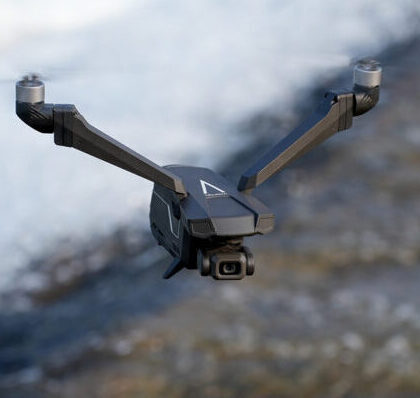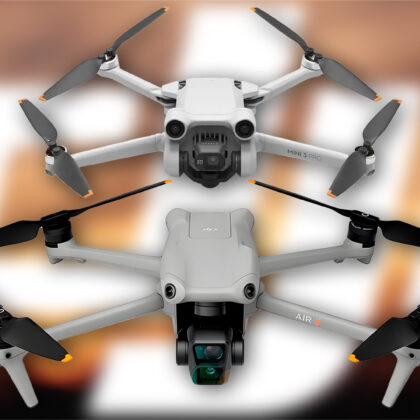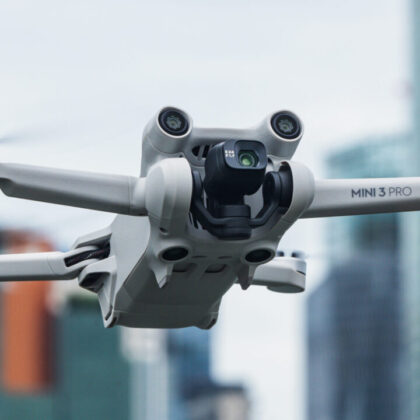Thanks to increased consumer interest, we are seeing more and more affordable drones released every year. However, it’s often very hard to differentiate between a cheap toy and an affordable drone meant for beginners looking to get into aerial photography. With that in mind, I’ve compiled a list of the best entry level drones on the market currently. Drones were considered not only based on price and specs but also usability and the inclusion of pro level features.
DJI Spark

In the under $500 category of drones the DJI Spark is the current undisputed king. Released May 2017, it originally sold for $499 before DJI dropped its price to $399 for the new year.
While the Spark’s camera doesn’t shoot 4k and won’t blow you away with its quality, getting amazing aerial footage is entirely possible with a little practice. And any shortcomings of the camera are more than made up for the amount of tech DJI was able to pack into such a small quadcopter. GPS, front obstacle sensors, and downward optical flow all work in harmony to make the Spark rock solid in the air. Add a 16 minute flight time, multiple smart shots, and the ability to easily launch from your hand and DJI really has a winner with the Spark.
As an added bonus, DJI is currently throwing in a free controller with the purchase of a Spark. This is a great deal as one of the biggest drawbacks of the non-fly more combo Spark is the lack of a physical controller. Besides offering a longer range, the tactile feedback you get from the physical controller makes it easier to fly the Spark smoothly and get better shots.
Yuneec Breeze 4k
The Breeze 4k was originally released back in August 2016 — making it ancient in drone years — however it’s still a very capable drone. In addition, recent price drops make it easy to find the Breeze available for less than $200.
Like its name implies, the Breeze 4k can record 4k video. Without a physical gimbal though, it does so at the expensive of electronic image stabilization which is limited to only 1080p video. Downward IR and optical flow sensors help the Breeze maintain its position even when flying indoors. Range is limited to about 300’ from your smartphone and the flight time of 12 minutes always seems a little too short.
The most attractive thing about the Yuneec Breeze 4k is currently its price. If you can’t find it for under $200 through any of the various retailers that carry it (Amazon, B&H, Best Buy, eBay, Walmart, etc) consider a different drone.
(At the time of writing, Walmart is actually selling it for just $149!)
Parrot Bebop 2

Even older than the Yuneec Breeze 4k is the Parrot Bebop 2. Announced back in November 2015 it was, at the time, very ahead of the competition. Since then, Parrot has scaled back their prosumer drone division, leaving the Bebop line without a real update other than the “Power” version release last fall. With foldable drones like the DJI Mavic Air offering 4k, 20+ min flight times, and a 4km range for $799, it’s hard to justify buying some of the more expensive Bebop 2 kits in 2018. The Bebop 2 lacks a mechanical gimbal and only manages 1080p video, which may leave some people wanting more. Partially due to the lack of a physical gimbal though, the Bebop 2 is tough enough to survive many crashes. Other features include a respectable 25 minute flight time, 984’ range via smartphone, and 14MP photos.
Price-wise the Parrot Bebop 2 starts for around $320 for just the drone. For an extra $70 though, you can also get the SkyController 2 and an FPV headset for your phone. The newest model, the Bebop 2 Power FPV Pack, will set you back $500 but includes several updated features like 40mph sport mode, follow me, and a 30 minute flight time.
Walkera Peri
An unabashed ripoff of the Spark, the Walkera Peri offers users looking to escape the DJI ecosystem a worthwhile alternative. While the Peri doesn’t have any forward sensors like the Spark to help avoid obstacles, it does have a 4k capable camera and the first 3-axis gimbal in a drone that size.
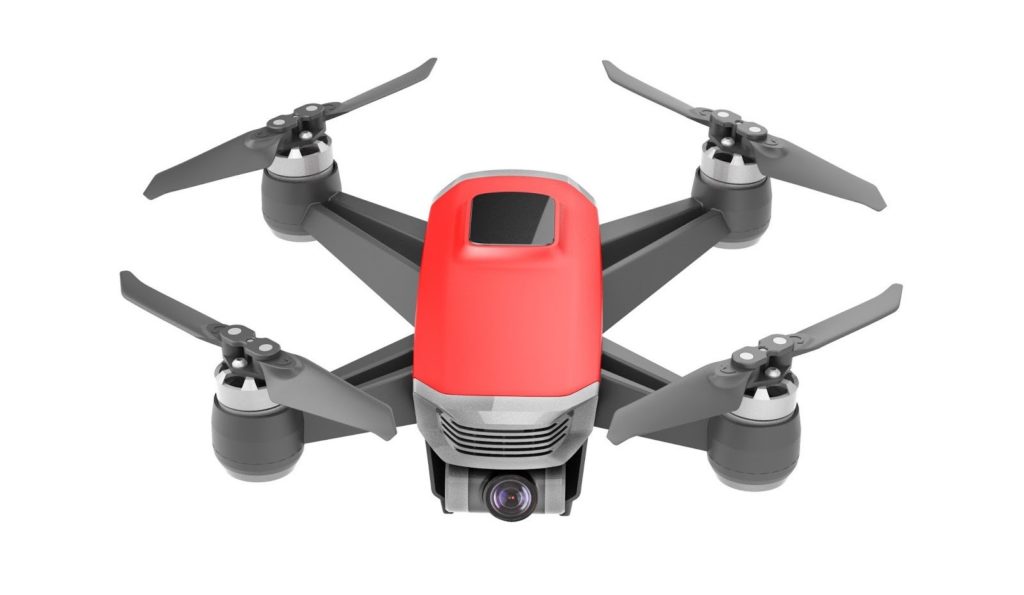 Other features of the Peri include a 15 minute flight time, 1km/1080p Wi-Fi video downlink, and smart flight modes like dronie, active track, and gesture mode. Walkera announced the Peri at CES 2018 but neglected to give a concrete release date other than “2-3 months from now”. If that’s accurate, we should see the Peri become available sometime in mid-March to April. It’s priced at $499 for just the drone or $575 for the drone and a controller.
Other features of the Peri include a 15 minute flight time, 1km/1080p Wi-Fi video downlink, and smart flight modes like dronie, active track, and gesture mode. Walkera announced the Peri at CES 2018 but neglected to give a concrete release date other than “2-3 months from now”. If that’s accurate, we should see the Peri become available sometime in mid-March to April. It’s priced at $499 for just the drone or $575 for the drone and a controller.
It’ll be interesting to see how the Peru’s performance compares to the Spark once it is finally released.
Ryze Tech Tello
Most drones under $150 are just “dumb” flying toys. They lack the sensors, features and intricate design of more-expensive prosumer drones; opting instead to prioritize looks and a low price tag in an effort to attract kids.
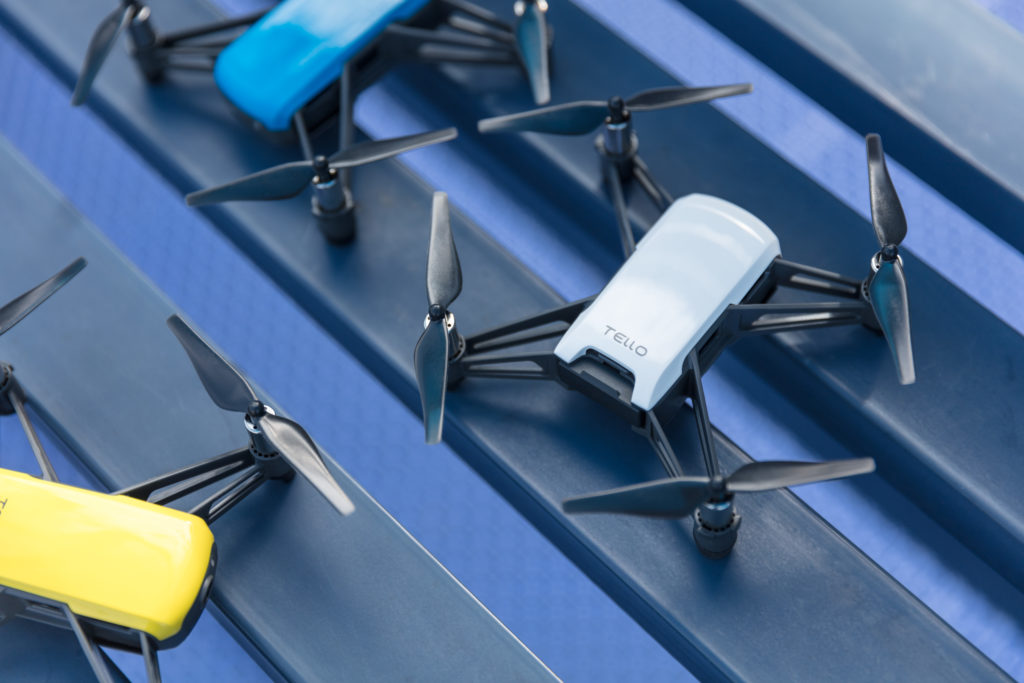
Even though the Tello — with its $99 dollar price tag and watch sized body — is similarly targeted more towards kids than entry level drone pilots, I strongly believe that it still deserves to be on this list. That is because the Tello was designed in partnership with industry leader DJI.
The color scheme alone screams DJI, but beneath the shell is what makes the difference. The Tello packs an Intel 14 core processor, enabling it to perform smart shots using only its vision positioning system. It also has a 13 minute flight time, 5mp/720p camera, and can perform flips using the smartphone app. Not bad for a drone that’s lighter than a deck of cards!
The Tello should be available through DJI starting March 2018 and it currently is available for preorder via B&H.
That’s it! (for now). Check back to this post often as I’ll try to update it with new releases, price drops, and reviews.

